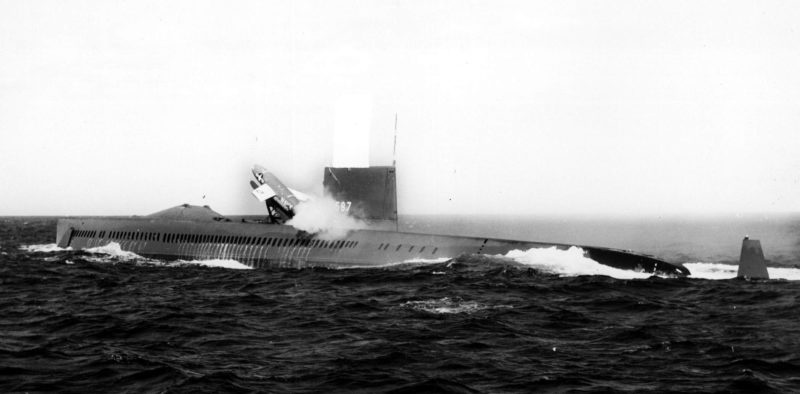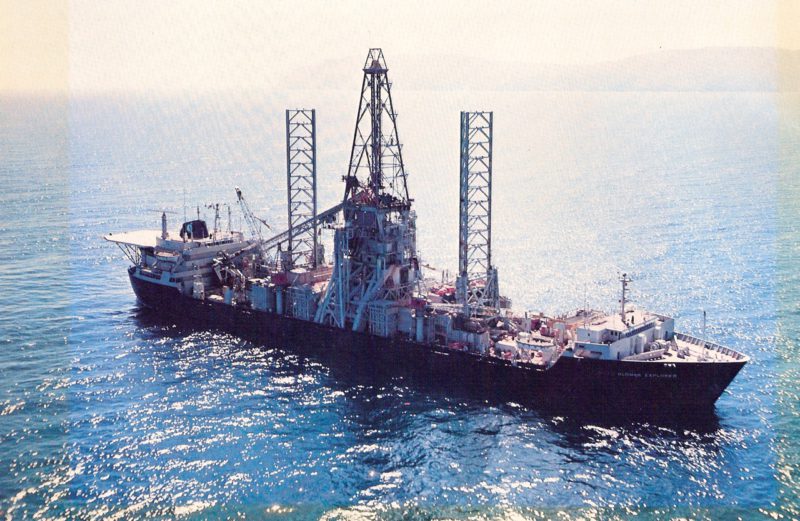What if I were to tell you that in 1974 the United States Government, in conjunction with an eccentric industrialist, conspired to salvage an Soviet ballistic missile submarine which had sank just six years prior? Sounds like the plot for a cheesy, 1960s style Cold War inspired science fiction movie, or a long lost script for a James Bond feature, does it not? But in reality such an operation did take place under the supervision of the American Central Intelligence Agency and even today it still remains as one of thee most ambitious covert operations in history.
The Story begins way back in 1968, during the height of the Cold War when both the United States and Soviet were engaged in a dangerous game of cat and mouse. It was that year when the U.S. Navy noticed a major spike in Soviet naval activity in the Northern Pacific ocean. The Soviet Pacific Fleet had deployed an unusual number of surface vessels to a certain area of the Pacific and were in fact involved in some rather unusual search operations, actions which were closely being watched by the U.S. Navy’s Office of Naval Intelligence. After monitoring the situation was not long before the Americans came to the conclusion that the Soviets had lost one of their submarines and were now trying to locate it, as the Soviet search area centered around known routes where the Americans knew Soviet ballistic submarines used during their patrols.
But there was something else which confirmed that the Soviets had lost a submarine. Years prior to the sinking, the United States had deployed a network of underwater listening post known as “SOSUS”, so as to track the movements of enemy submarines. As it were to happen, one of these hydrophones picked up what sounded like in explosion/implosion which had occurred just weeks earlier. But there was one other thing which SOSUS was able to determine, it was that the Soviets were looking in the wrong place. The Implosion had occurred hundreds of miles away from where the Soviet Navy was operating.

Weeks after the Soviet search came to an end, the U.S. Navy initiated “Operation: Sand Dollar”, with the deployment of the USS Halibut, a submarine which was developed to carry nuclear tipped cruise missiles, but was modified to carry a special camera system to photograph the wreck. With the information provided by the Halibut, it was not long before plan was hatched to recover the Soviet vessel, which was discovered to be a GOLF-II Ballistic Missile Submarine.
In 1972, Global Marine Development inc. launched the Hughes Glomar Explorer which when commissioned, was said to be used for deep water exploration of deposits of precious metals. But in reality was going to play a crucial roll in the recovery effort. Billionaire Howard Hughes lent his name to the mining vessel, as his companies were involved in a number of top secret projects undertaken by the U.S. Government and this would be no different. While on the surface the vessel did look the part of a mining ship, the Glomar Explorer would in fact act as a floating platform for the covert salvage operation. But the Explorer was only the command ship for the actual operation, as the vessel also held the actual vehicle which would raise the submarine.

On July 4th, 1974, the Glomar Explorer arrived at the K-129’s wreck site, 1500 miles north west of Hawaii and proceeded to conduct the salvage operation. Just as planned, Clementine (the Glomars salvage device) was successfully lowered down to the wreck site over 16,000 feet below the ocean surface and was able to successfully grab on to the sub. But while returning to the surface, disaster struck.
Halfway to the surface, Clementine suffered a catastrophic failure when several of her “claws” fractured and broke off. Sending two thirds of the K-129 back to the ocean floor, but the operation still continued and eventually what remained was successfully raised into the Glomar Explorer’s hull. Where it was reported that two nuclear tipped torpedoes, radio equipment, code books and even the ship’s bell were recovered. But the operation also recovered the bodies of six Soviet sailors, who were subsequently given a burial at sea with full military honours in a service held on board the Explorer itself. A service which was actually filled by a C.I.A. Camera crew and the footage handed over to the Russian government in the 1990’s.

There were plans to go back to the site conduct another salvage mission to recover the remaining sections of the submarine, specifically the ballistic missiles which still sat on the bottom with the rest of the K-129, but this never came to be. In 1975, the Times newspaper broke the story about Azorian and the mission came into the public eye and thus the mission was scrapped. Today Project Azorian is seen as one of the biggest intelligence coups of the Cold War, as well as setting the record for the deepest salvage operation in history, but there is still a lot of mystery which surrounds it.
There are many who believe that a lot more was recovered than what the C.I.A. had officially said and the numerous videos and pictures which were taken of the K-129 during Sand Dollar and the salvage operation itself have never been released to the public. But quite possibly one of the biggest mysteries which still remain unanswered, was the location of the submarine itself. The U.S. Navy knew of the routes taken by the Soviets when they went out for patrol, but the Golf-II submarine was hundreds of miles away from where it was supposed to be. This fact alone has lead many to believe that the K-129 may have a part of a covert Soviet mission which went horribly wrong, or that the ship’s captain and its crew had gone rouge.
One of the more puzzling stories to come out of this was actually during Sand Dollar, which says one of the pictures taken at the wreck site showed human remains dressed in what looked like fire fighting equipment. Leading many to believe that the K-129 may have actually surfaced before she sank. But until someone decides to declassify the files on Azorian or Sand Dollar, the mystery of K-129’s sinking will forever remain a secret.








Very good article. It’s obvious that you did your research.
A little bit of info you might or might not know:
When the CIA developed all of the thousands of photos taken by the Halibut, they brought several key photos to Nixon, using them as a way of showing him that the “Project” could be successful. One of the pics was of that Russian submariner’s body lying next to the sub. And I read (from MY research) that he was dressed in “Inclement/Cold Weather Gear”, as if- like you said- they had surfaced before sinking, and maybe he was outside the sub, in the cold rain trying to do something…